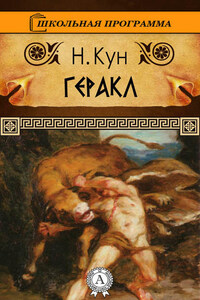ROAD OF BONES
THE SIEGE OF KOHIMA 1944
THE EPIC STORY OF THE LAST
GREAT STAND OF EMPIRE
FERGAL KEANE
William Collins
An imprint of HarperCollinsPublishers Ltd 1 London Bridge Street London SE1 9GF www.harpercollins.co.uk
First published in Great Britain by HarperPress in 2010
Copyright © Fergal Keane 2010
Fergal Keane asserts the moral right to
be identified as the author of this work
A catalogue record for this book
is available from the British Library
Maps by Hugh Bicheno
All rights reserved under International and Pan-American Copyright Conventions. By payment of the required fees, you have been granted the nonexclusive, nontransferable right to access and read the text of this ebook on screen. No part of this text may be reproduced, transmitted, downloaded, decompiled, reverse engineered, or stored in or introduced into any information storage and retrieval system, in any form or by any means, whether electronic or mechanical, now known or hereinafter invented, without the express written permission of HarperCollins e-books.
HarperCollins Publishers has made every reasonable effort to ensure that any picture content and written content in this ebook has been included or removed in accordance with the contractual and technological constraints in operation at the time of publication.
Source ISBN 9780007132409
Ebook Edition © JULY 2013 ISBN 9780007439867
Version 2018-12-05
In memory of John Shipster, soldier.
India 1942–1945
Burma Theatre 1943
Kohima District
Arakan Battles 1944
U-Go Offensive, March – April 1944
Kohima, 5 April 1944, Kohima Defence and Japanese Attacks
Kohima Ridge
Final Stand and Grover’s Advance on Kohima
The Road of Bones, June – December 1944
Final Offensive 1945
‘The dreams of empire lure the hearts of kings – and so men die’
CORPORAL G. W. DRISCOLL, BURMA, 1944
In the morning the general left his house after breakfast and walked into the country. He did this for two years. In the heat of summer the old soldier found the going harder. He sweated heavily and his bones hurt in the evenings. When the winter came he wore an old army greatcoat and walked along the ridges of the frozen rice paddies. He did not stop when the snows came and might amuse himself by trying to count the white geese in the fields. It was hard to tell where the snow ended and the birds began. The general was born here in Yamagata, among fishermen and farmers on the north-east coast of Japan. Here, in the town that lay between the mountains and the sea, he would atone for the great disaster. Every time a soldier’s bones came home from the front he would set out on his travels. ‘I will finish this before I die,’ he told his son.
Kohima. It lived with him every day of his life. All of the men who had followed him lying in unmarked graves, lost along the mountain tracks, or drowned in the Chindwin river. At every house he bowed and introduced himself and having been invited in he would remove his shoes and sit with the family. Sometimes it would be a woman with young children, at other times a widow alone, or elderly parents. But all of them were linked to the general by the most immutable of bonds. He had taken their sons, husbands, fathers, over the mountains to India and they had not come back. At times they showed him photographs and letters. Many expressed surprise at his visit. The generals of the Imperial Japanese Army were not usually to be found calling on the homes of ordinary soldiers. The general carried a candle in his pocket and he would light this and read a poem for the dead. Its exact words have been lost with time, but he spoke of the soldiers’ courage and how sorry he felt that they had lost their lives. His son, Goro, believed Lieutenant General Kotuku Sato wished he had died with them. ‘I had the impression that he had very strong feelings of loss over what happened to his men on the battlefield,’ he said. The general knew there were many officers who believed he should have killed himself. How could he live with the shame of such a defeat?
I listen to the story in Goro Sato’s home in Ibaraki. He produces photo albums, a whole bundle of them, devoted to his father’s memory. There are pictures of Kotuku Sato in cadet’s uniform which date from the beginning of his career in the early 1920s. Later, in the 1930s, he is photographed standing next to Emperor Hirohito at a military exercise. There are images of the rising young officer dressed in furs and heavy boots on the Chinese border, and one of him relaxing in a kimono with a glass of sake and a broad smile on his face. There is one intriguing image. The general is dressed in a white linen suit, standing next to an American-made car. The photograph was taken outside a pagoda somewhere in South-East Asia. The general looks much older. There is a wariness in his expression that was not present in the earlier images.










